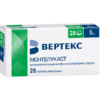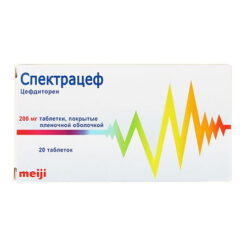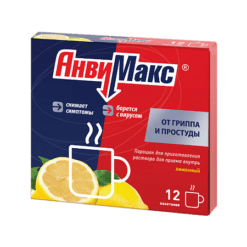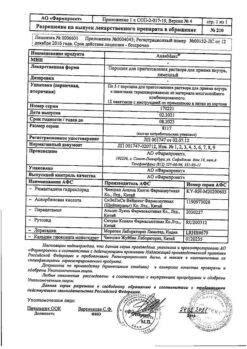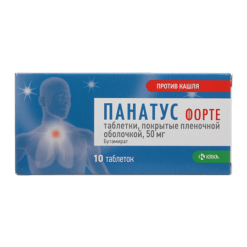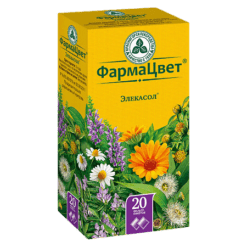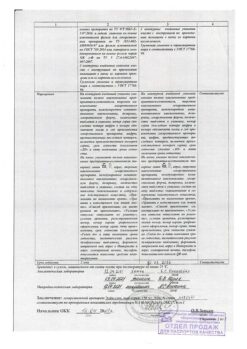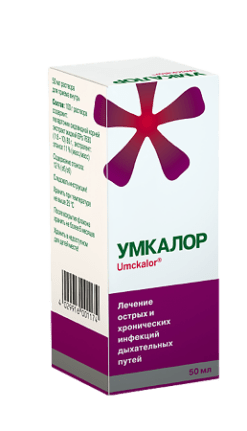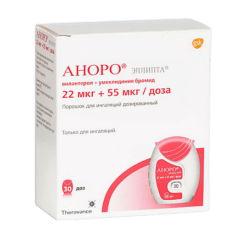No products in the cart.
Montelukast-Vertex, 5 mg 28 pcs
€29.15 €25.27
Description
Blocker of cysteinyl leukotriene receptor CysLT1 (leukotrienes C4, D4 and E4 – mediators of chronic persistent inflammation, which supports bronchial hyperresponsiveness in bronchial asthma).
Prevent excessive formation of secretion in the bronchi, edema of the mucous membrane of the airways.
Limits the severity of bronchial asthma and the frequency of asthmatic attacks. It is highly effective when taken orally.
The bronchodilator effect develops within 1 day and lasts for a long time.
It is effective in patients with mild persistent asthma that is not sufficiently controlled by bronchodilators alone.
Indications
Indications
prevention and long-term treatment of bronchial asthma in children aged 6 to 14 years, including prevention of daytime and nighttime symptoms of the disease, treatment of bronchial asthma in patients with hypersensitivity to acetylsalicylic acid and prevention of bronchospasm caused by physical activity;
relief of daytime and nighttime symptoms of seasonal and/or year-round allergic rhinitis in children aged 6 to 14 years.
Pharmacological effect
Pharmacological effect
Pharmacotherapeutic group
Anti-inflammatory antibronchoconstrictor agent – leukotriene receptor blocker.
ATX code
R03DC03
Pharmacological properties
Pharmacodynamics
Cysteinyl leukotrienes (LTC4, LTD4, LTE4) are strong mediators of inflammation – eicosanoids, which are secreted by various cells, including mast cells and eosinophils. These important proasthmatic mediators bind to cysteinyl leukotriene receptors. Cysteinyl leukotriene receptor type 1
(CysLT1 receptors) are present in the human respiratory tract (including bronchial smooth muscle cells, macrophages) and other proinflammatory cells (including eosinophils and some myeloid stem cells). Cysteinyl leukotrienes correlate with the pathophysiology of bronchial asthma and allergic rhinitis. In asthma, leukotriene-mediated effects include bronchospasm, increased mucus secretion, increased vascular permeability, and increased eosinophil counts. In allergic rhinitis, after exposure to an allergen, cysteinyl leukotrienes are released from proinflammatory cells of the nasal mucosa during the early and late phases of the allergic reaction, which is manifested by symptoms of allergic rhinitis. An intranasal test with cysteinyl leukotrienes has demonstrated an increase in airway resistance and symptoms of nasal obstruction.
Montelukast is a highly active drug when taken orally that significantly improves inflammation in bronchial asthma. According to biochemical and pharmacological analysis, the drug binds with high selectivity and chemical affinity to CysLT1 receptors (instead of other pharmacologically important airway receptors, such as prostaglandin, cholinergic or β-adrenergic receptors). Montelukast inhibits the physiological effects of cysteinyl leukotrienes LTC4, LTD4, LTE4 by binding to CysLT1 receptors without having a stimulating effect on these receptors.
Montelukast inhibits CysLT1 receptors on the airway epithelium, thereby reducing bronchospasm caused by inhaled cysteinyl leukotriene LTD4 in patients with bronchial asthma. A dose of 5 mg is sufficient to relieve bronchospasm induced by LTD4.
Montelukast causes bronchodilation within two hours after oral administration and may complement bronchodilation caused by β2-agonists.
The use of montelukast in doses exceeding 10 mg per day, taken once, does not increase the effectiveness of the drug.
Pharmacokinetics
Suction
Montelukast is rapidly and almost completely absorbed after oral administration. When taking 5 mg chewable tablets on an empty stomach, the maximum plasma concentration (Cmax) in adults is achieved after 2 hours. The average bioavailability when taken orally is 73%. Food intake does not have a clinically significant effect with long-term use.
Distribution
Montelukast is more than 99% bound to plasma proteins. The volume of distribution of montelukast at steady state concentration averages 8-11 liters. Studies conducted in rats with radiolabeled montelukast indicate minimal penetration of the blood-brain barrier. In addition, the concentration of labeled montelukast 24 hours after administration was minimal in all other tissues.
Metabolism
Montelukast is extensively metabolized. When studying therapeutic doses at steady state in plasma in adults and children, the concentration of montelukast metabolites is not determined.
In vitro studies using human liver microsomes have shown that cytochrome P450 CYP isoenzymes: 3A4, 2A6, 2C8 and 2C9 are involved in the metabolism of montelukast. According to further results of studies conducted in vitro in human liver microsomes, the therapeutic concentration of montelukast in blood plasma does not inhibit cytochrome P450 CYP isoenzymes: 3A4, 2C9, 1A2, 2A6, 2C19 and 2D6.
Removal
Plasma clearance of montelukast in healthy adults averages 45 ml/min. After oral administration of radioactively labeled montelukast, 86% of its amount is excreted through the intestines within 5 days and less than 0.2% by the kidneys, which confirms that montelukast and its metabolites are excreted almost exclusively in bile.
The half-life of montelukast in young healthy adults ranges from 2.7 to 5.5 hours. The pharmacokinetics of montelukast remains almost linear when administered orally at doses above 50 mg. When taking montelukast in the morning and evening hours, no differences in pharmacokinetics were observed. When taking 10 mg of montelukast once a day, a moderate (about 14%) accumulation of the active substance in the blood plasma is observed.
Features of pharmacokinetics in different groups of patients
Gender
The pharmacokinetics of montelukast are similar in women and men.
Elderly patients
With a single oral dose of 10 mg of montelukast, the pharmacokinetic profile and bioavailability are similar in elderly and young patients. The plasma half-life of montelukast is slightly longer in elderly patients. No dose adjustment is required in elderly patients.
Race
There were no differences in clinically significant pharmacokinetic effects in patients of different races.
Liver failure
In patients with mild to moderate hepatic impairment and clinical manifestations of cirrhosis, a slowdown in the metabolism of montelukast was observed, accompanied by an increase in the area under the concentration-time pharmacokinetic curve (AUC) by approximately 41% after a single dose of 10 mg. The half-life of montelukast is slightly longer in these patients (mean half-life 7.4 hours). No dose adjustment of montelukast is required for patients with mild to moderate hepatic impairment. There are no data on the nature of the pharmacokinetics of montelukast in patients with severe liver failure (more than 9 points on the Child-Pugh scale).
Kidney failure
Because montelukast and its metabolites are not excreted through the kidneys, the pharmacokinetics of montelukast in patients with renal impairment have not been evaluated. No dose adjustment is required for this group of patients.
Special instructions
Special instructions
The effectiveness of oral montelukast for the treatment of acute attacks of bronchial asthma has not been established. Therefore, montelukast tablets are not recommended for the treatment of acute attacks of bronchial asthma. Patients should be instructed to always carry emergency medications to relieve asthma attacks (inhaled short-acting β2-agonists).
You should not stop taking montelukast during an exacerbation of bronchial asthma. You should remember the need to use emergency medications to stop attacks (short-acting inhaled β2-agonists).
Patients with a confirmed allergy to acetylsalicylic acid and other non-steroidal anti-inflammatory drugs (NSAIDs) should not take these drugs during treatment with montelukast, since montelukast, while improving respiratory function in patients with allergic bronchial asthma, however, cannot completely prevent bronchoconstriction caused by NSAIDs.
The dose of inhaled or oral glucocorticosteroids taken during treatment with montelukast can be gradually reduced under medical supervision. However, abrupt replacement of glucocorticosteroids with montelukast cannot be carried out.
Neuropsychiatric disorders have been described in patients taking montelukast (see section “Side Effects”). Given that these symptoms could be caused by other factors, it is unknown whether they are related to montelukast. The physician should discuss this adverse event with patients and/or their parents/guardians. Patients and/or their parents/guardians should be advised that if such symptoms occur, they should notify their physician.
In rare cases, patients receiving anti-asthma drugs, including leukotriene receptor antagonists, have experienced one or more of the following adverse events: eosinophilia, rash, worsening of pulmonary symptoms, cardiac complications and/or neuropathy, sometimes diagnosed as Churg-Strauss syndrome (systemic eosinophilic vasculitis). These cases have sometimes been associated with dose reduction or discontinuation of oral corticosteroid therapy. Although a causal relationship between these adverse events and leukotriene receptor antagonist therapy has not been established, caution and appropriate clinical monitoring should be exercised in patients receiving montelukast.
The drug contains aspartame, a source of phenylalanine. Patients with phenylketonuria should be informed that each chewable tablet contains aspartame equivalent to 0.842 mg of phenylalanine and the drug should not be taken by patients with phenylketonuria.
Impact on the ability to drive vehicles and machinery
There is no evidence that taking montelukast affects the ability to drive a car or operate machinery. However, when using the drug, side effects such as dizziness and drowsiness may occur. In view of this, caution should be exercised when driving vehicles and performing actions that require rapid psychomotor reactions.
Active ingredient
Active ingredient
Montelukast
Composition
Composition
One chewable tablet contains:
active ingredient: montelukast sodium – 5.2 mg (in terms of montelukast – 5.0 mg);
excipients: mannitol – 203.3 mg; microcrystalline cellulose 112 – 81.0 mg; hyprolose (hydroxypropylcellulose) – 3.0 mg; magnesium stearate – 3.0 mg; Cherry flavoring – 3.0 mg; aspartame – 1.5 mg.
Pregnancy
Pregnancy
There have been no clinical studies of montelukast in pregnant women. The drug should be used during pregnancy and lactation only if the expected benefit to the mother outweighs the potential risk to the fetus or child. During post-marketing use of montelukast, the development of congenital limb defects has been reported in newborns whose mothers took montelukast during pregnancy. Most of these women also took other medications to treat asthma during pregnancy. A cause-and-effect relationship between taking montelukast and the development of congenital limb defects has not been established.
It is not known whether montelukast is excreted in breast milk. Since many drugs are excreted in breast milk, this must be taken into account when prescribing montelukast to breastfeeding women.
Contraindications
Contraindications
hypersensitivity to any of the components of the drug;
children under 6 years of age;
phenylketonuria.
Side Effects
Side Effects
In general, the drug is well tolerated. Side effects are usually mild and, as a rule, do not require discontinuation of the drug. The overall incidence of side effects with montelukast is comparable to that with placebo.
Children aged 6 to 14 years with bronchial asthma
The safety profile of montelukast in children was generally similar to that in adults and comparable to that of placebo.
In an 8-week placebo-controlled clinical trial, the only AE assessed as drug-related occurring in >1% of patients treated with montelukast and more frequently than in patients treated with placebo was headache. The difference in frequency between the two treatment groups was not statistically significant.
In growth rate studies, the safety profile in patients in this age group was consistent with the previously described safety profile of montelukast.
With longer treatment (more than 6 months), the AE profile did not change.
Adverse events reported during post-marketing use of the drug are listed in the table below according to systemic organ classes and specific adverse events. Frequency categories were estimated based on relevant clinical studies.
System-organ class
Adverse events
Frequency category 1
Infections and parasitic diseases
upper respiratory tract infections2
very often
Blood and lymphatic system disorders
increased tendency to bleed
rarely
thrombocytopenia
very rarely
Immune system disorders
hypersensitivity reactions, including anaphylaxis
infrequently
eosinophilic infiltration of the liver
very rarely
Mental disorders
sleep disturbances, including nightmares, insomnia, somnambulism, anxiety, agitation, including aggressive behavior or hostility, depression, psychomotor hyperactivity (including irritability, restlessness, tremor3)
infrequently
attention disorder, memory impairment, tic
rarely
hallucinations, confusion, dysphemia (stuttering), suicidal thoughts and behavior (suicidality), obsessive-compulsive symptoms
very rarely
Nervous system disorders
dizziness, drowsiness, paresthesia/hypoesthesia, convulsions
infrequently
Heart disorders
rapid heartbeat
rarely
Respiratory, thoracic and mediastinal disorders
nosebleed
infrequently
Churg-Strauss syndrome (CSS) (see section “Special instructions”)
very rarely
pulmonary eosinophilia
very rarely
Gastrointestinal disorders
diarrhea4, nausea4, vomiting4
often
dryness of the oral mucosa, dyspepsia
infrequently
Disorders of the liver and biliary tract
increased activity of serum transaminases (ALT, AST)
often
hepatitis (including cholestatic, hepatocellular and mixed liver damage)
very rarely
Skin and subcutaneous tissue disorders
rash4
often
tendency to form hematomas, urticaria, itching
infrequently
angioedema
rarely
erythema nodosum, erythema multiforme
very rarely
Musculoskeletal and connective tissue disorders
arthralgia, myalgia, including muscle cramps
infrequently
Renal and urinary tract disorders
enuresis in children
infrequently
General and administration site disorders
pyrexia4
often
asthenia/fatigue, feeling of general malaise, swelling
often
1 Frequency category: defined for each adverse reaction depending on the frequency indicated in the clinical trial database: very common (≥1/10), common (≥1/100 to ≥1/10), uncommon (≥1/1000 to ≥1/100), rare (≥1/10000 to ≥1/1000), very rare (< 1/10000).2 This adverse event, which was classified as “very common” in patients receiving montelukast, was also classified as “very common” in patients receiving placebo in clinical studies.
3 Frequency category: rare.
4 This adverse event, which was classified as “common” in patients receiving montelukast, was also classified as “common” in patients receiving placebo in clinical studies.
Interaction
Interaction
Montelukast can be prescribed together with other medicines that are usually used for the prevention and long-term treatment of bronchial asthma and/or the treatment of allergic rhinitis. The recommended therapeutic dose of montelukast did not have a clinically significant effect on the pharmacokinetics of the following drugs: theophylline, prednisone, prednisolone, oral contraceptives (ethinyl estradiol/norethisterone 35/1), terfenadine, digoxin and warfarin.
The AUC value of montelukast is reduced by approximately 40% when taking phenobarbital concomitantly, but this does not require a change in the dosage regimen of the drug.
In vitro studies have established that montelukast inhibits the CYP 2C8 isoenzyme of the cytochrome P450 system, however, when studying the in vivo drug interaction between montelukast and rosiglitazone (metabolized with the participation of the CYP 2C8 isoenzyme of the cytochrome system), no confirmation of montelukast inhibition of the CYP 2C8 isoenzyme was obtained. Therefore, in clinical practice, montelukast is not expected to influence the CYP2C8-mediated metabolism of a number of drugs, including paclitaxel, rosiglitazone, repaglinide, etc.
In vitro studies have shown that montelukast is a substrate of CYP isoenzymes 2C8, 2C9 and 3A4. Data from a clinical drug interaction study regarding montelukast and gemfibrozil (an inhibitor of both CYP 2C8 and 2C9) demonstrate that gemfibrozil increases the effect of systemic exposure to montelukast by 4.4 times. Co-administration of itraconazole, a strong inhibitor of the CYP3A4 isoenzyme, with gemfibrozil and montelukast did not lead to an additional increase in the effect of systemic exposure to montelukast. The effect of gemfibrozil on the systemic exposure of montelukast may not be considered clinically significant based on safety data at doses greater than the approved dose of 10 mg in adult patients (eg, 200 mg/day in adult patients for 22 weeks and up to 900 mg/day in patients taking the drug for approximately one week, no clinically significant adverse effects were observed). Therefore, no dosage adjustment of montelukast is required when coadministered with gemfibrozil. Based on the results of in vitro studies, clinically significant drug interactions with other known inhibitors of the CYP 2C8 isoenzyme (for example, trimethoprim) are not expected. In addition, coadministration of montelukast with itraconazole alone did not significantly increase the effect of systemic exposure to montelukast.
Combination treatment with bronchodilators
Montelukast is a reasonable addition to bronchodilator monotherapy if the latter do not provide adequate control of bronchial asthma. Once a therapeutic effect is achieved during montelukast therapy, a gradual reduction in the dose of bronchodilators can be started.
Combined treatment with inhaled glucocorticosteroids
Treatment with montelukast provides an additional therapeutic effect to patients using inhaled glucocorticosteroids. Once the patient’s condition has stabilized, a gradual reduction in the dose of glucocorticosteroid can begin under the supervision of a physician. In some cases, complete withdrawal of inhaled glucocorticosteroids is acceptable, but abrupt replacement of inhaled glucocorticosteroids with montelukast is not recommended.
Overdose
Overdose
Symptoms
There are no data on symptoms of overdose when taking montelukast in patients with bronchial asthma at a dose exceeding 200 mg per day for 22 weeks, and at a dose of 900 mg per day for one week.
There have been cases of acute overdose of montelukast (taking at least 1000 mg per day) during the post-marketing period and during clinical trials in adults and children. Clinical and laboratory data indicated comparable safety profiles of montelukast in children, adults and elderly patients.
The most common side effects were thirst, drowsiness, vomiting, psychomotor agitation, headache, and abdominal pain. These side effects are consistent with the safety profile of montelukast.
Treatment
Treatment in case of acute overdose is symptomatic. There are no data on the effectiveness of peritoneal dialysis or hemodialysis.
Storage conditions
Storage conditions
Store in a place protected from light at a temperature not exceeding 25 ºС.
Keep out of the reach of children.
Shelf life
Shelf life
2 years.
Do not use after expiration date.
Manufacturer
Manufacturer
Vertex, Russia
Additional information
| Manufacturer | Vertex, Russia |
|---|---|
| Medication form | chewable tablets |
| Brand | Vertex |
Related products
Buy Montelukast-Vertex, 5 mg 28 pcs with delivery to USA, UK, Europe and over 120 other countries.



